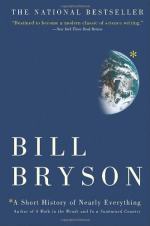
|
| Name: _________________________ | Period: ___________________ |
This quiz consists of 5 multiple choice and 5 short answer questions through Part 5,Chapter 23.
Multiple Choice Questions
1. What did Carl Linnaeus bring order to through his method of classification?
(a) The bacterial world.
(b) Naming bodies of water.
(c) Naming features of the moon.
(d) The plant world.
2. When entomologist Terry Erwin collected insect samples from 19 rain forest trees, how many different varieties of beetles did he find?
(a) 150.
(b) 600.
(c) 42.
(d) 1,200.
3. In 1875, why was Max Planck advised against studying physics and urged to study math instead?
(a) Planek knew high-level math but only very basic physics.
(b) It was believed that all the important physics discoveries had already been made.
(c) The government often arrested those who delved in certain branches of physics.
(d) A career in math offered greater financial opportunities for him.
4. In Chapter 23, the author discusses the battles that go on in the plant world regarding:
(a) Using plants for medicinal purposes.
(b) Funding for plant research.
(c) Who owns plant patents.
(d) What to name plants.
5. In the 1960s, what did Bob Christiansen realize about Yellowstone National Park after observing NASA-supplied images?
(a) Practically the whole park is a volcano.
(b) Most of the park was created by a massive earthquake.
(c) The park holds thousands of volcanoes.
(d) The park was carved by moving glaciers.
Short Answer Questions
1. When did the last supervolcano erupt on Earth?
2. A caldera is a:
3. According to Bryson, what percentage of all animal and plant life is yet to be discovered?
4. What is an extremophile?
5. Max Planck ignored those who urged him to avoid physics and ended up doing groundbreaking work on:
|
This section contains 283 words (approx. 1 page at 300 words per page) |

|




